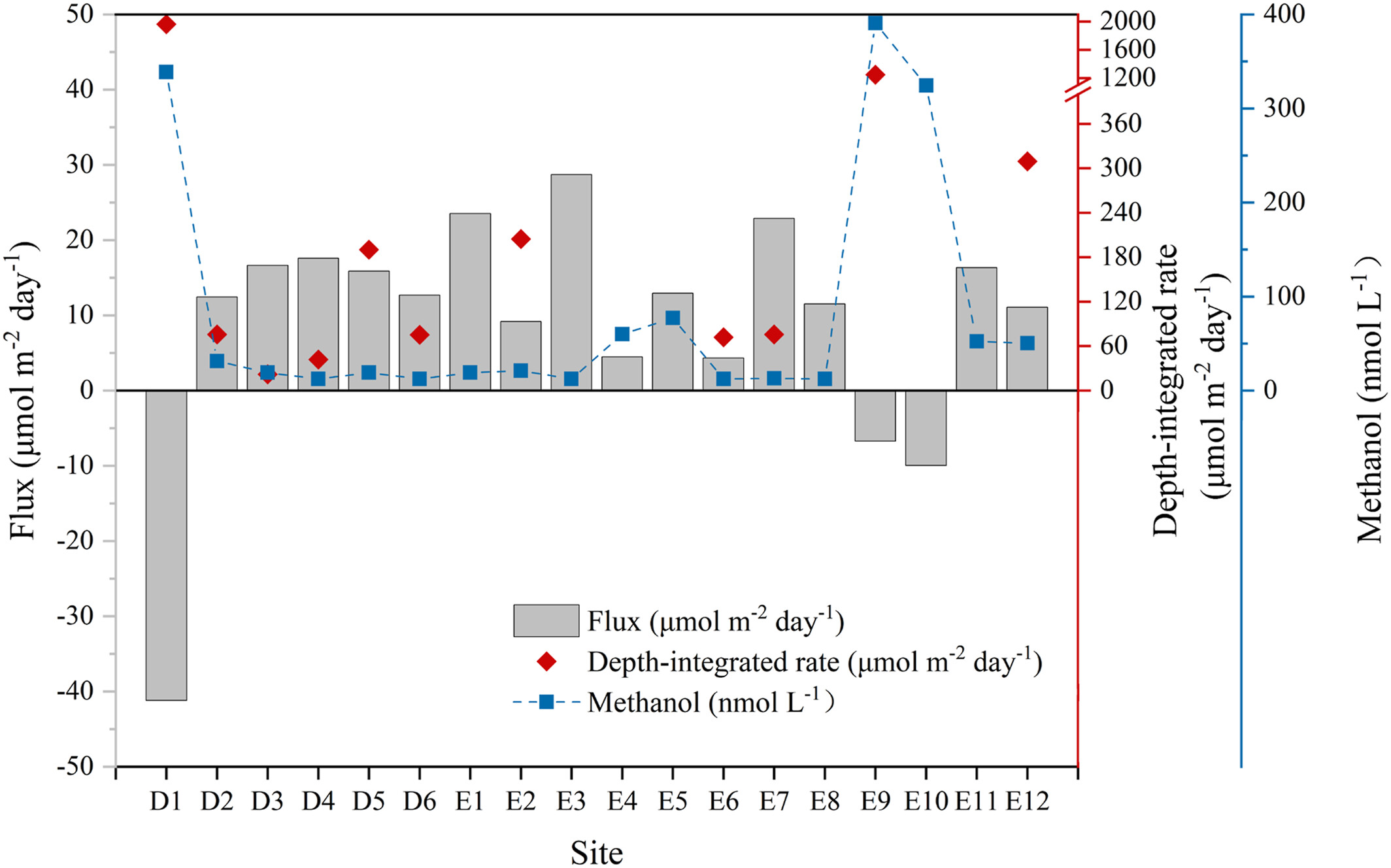Methanol Concentrations and Biological Methanol Consumption in the Northwest Pacific Ocean
Zhen Zhou, Guang-Chao Zhuang, Shi-Hai Mao, Jiarui Liu, Xiao-Jun Li, Qiao Liu, Guo-Dong Song, Hong-Hai Zhang, Zhaohui Chen, Andrew Montgomery, Samantha Joye, Gui-Peng Yang
Published in Geophysical Research Letters, April 2023
Methanol metabolism can play an important role in marine carbon cycling. We made contemporaneous measurements of methanol concentration and consumption rates in the northwest Pacific Ocean to constrain the pathways and dynamics of methanol cycling. Methanol was detected in relatively low concentrations (<12–391 nM), likely due to rapid biological turnover. Rates of methanol oxidation to CO2 (0.9–130.5 nmol L−1 day−1) were much higher than those of assimilation into biomass (0.09–6.8 nmol L−1 day−1), suggesting that >89.7% of methanol was utilized as an energy source. Surface water acted as a net methanol sink at most sites, with an average flux of 9 μmol L−1 day−1. Atmospheric deposition accounted for 22.7% of microbial methanol consumption in the mixed layer, illustrating that the atmosphere is less important than internal processes for driving methanol cycling in these pelagic waters.

Fig. Estimated air-sea exchange flux and depth-integrated consumption rates of methanol in the Kuroshio-Oyashio extension region. Negative values represented methanol emission from the ocean to the atmosphere. Flux was estimated using methanol concentrations of 12 nM (the limit of detection) for sites below the detection limit.
Zhou, Z., Zhuang, G.-C., Mao, S.-H., Liu, J., Li, X.-J., Liu, Q., et al. (2023). Methanol concentrations and biological methanol consumption in the northwest Pacific Ocean. Geophysical Research Letters, 50, e2022GL101605. https://doi.org/10.1029/2022GL101605